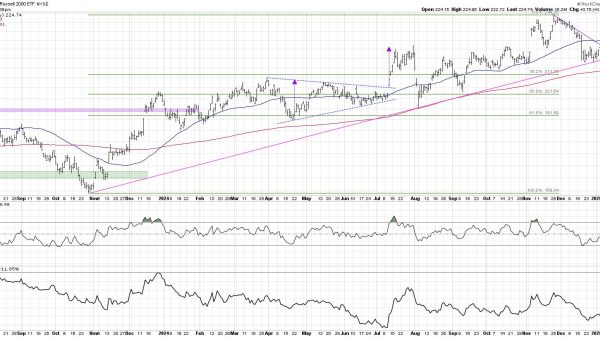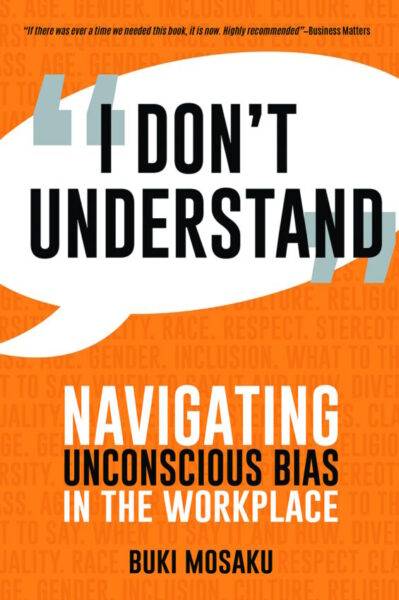Workplace bias and communication expert Buki Mosaku, founder of DiverseCity Think Tank and author of new guide “I Don’t Understand”: Navigating Unconscious Bias in the Workplace, reveals why confronting reverse bias is key to maintaining team cohesion and an essential step towards reducing the wider underrepresentation of minorities in senior roles.
Rarely openly acknowledged, reverse bias has the potential to destabilize otherwise cohesive teams and perpetuate career-stifling unconscious bias towards minorities — further reducing their underrepresentation in senior and higher-profile roles in the workplace.
We can’t begin to address unconscious workplace bias without recognising its multi-directional nature, its prevalence in every company, and the subversive effect it can have on inclusion and diverse teams.
It starts by understanding and recognising that there are two forms of unconscious workplace bias — directional bias and reverse bias — then learning how to navigate both.
Reverse bias occurs when minorities and marginalised group members misinterpret decisions, words, or behaviours by majority people-managers or leaders as either personal, prejudicial attacks or micro-aggressions, or when they confuse unfavourable decisions as unconsciously motivated by bias.
Unaddressed, reverse bias perpetuates the problem of unconscious bias in the workplace and can have a career-stifling impact on minority staff and team cohesion, which is why it must be called out.
The vast majority of people-managers are ill-equipped to call out sensed reverse bias from their staff members — the unconscious perpetrators. So rather than appearing unsympathetic to the equality cause, they remain silent.
The problem is that their silence in the moment reinforces to the unconscious perpetrator of reverse bias that they have indeed been a victim of career-stifling unconscious bias, when this is not the case.
The situation is compounded when, as frequently happens, the unconscious perpetrator of reverse bias remains silent in the moment about the bias they are sensing but instead calls out that bias later on to others from the same minority group whom they are comfortable with.
This, in turn, reinforces biases about the majority being guilty perpetrators of bias towards specific minority groups.
Likewise, when majority people–managers sense reverse bias they also tend to call it out to people that they are comfortable with, who tend to be part of the majority. This reinforces biases from the majority about minorities having ‘chips on their shoulder’. To quote The Ballad of East and West, “Never the twain shall meet”.
By understanding how reverse bias develops, leaders and people-managers can learn how to stop it in its tracks and arrest its far-reaching impact on team cohesion and minority representation.
The Five Stages Of Reverse Bias
Stage One: Victimisation through directional bias
Directional bias occurs when a victim receives bias-related behaviour from an unconscious perpetrator. In this stage, the minority experiences disturbing bias, usually from a superior or person of influence (but this can also be from a colleague).
Stage Two: The victim enters a helpless victim state
The victim is in a state of shock, perceiving they’re a victim of injustice, inequity, and unfair behaviour based on their gender, race, disability, age, sexual orientation, socio-economic background, or other marginalised trait. The victim is momentarily incapacitated.
Stage Three: The victim seeks support
After the trauma, the victim typically looks for a supporter. This is someone they trust to whom they can air their grievance and share what they’ve been through. The supporter is sympathetic, usually because they’ve experienced similar directional bias. This confirms to the victim that they aren’t ‘crazy’. They now accept, if they didn’t already, that the perpetrator is acting from an unconscious place due to societal conditioning.
Stage Four: The victim adopts a ‘state of alert’
The victim consciously or unconsciously begins to adopt a state of alertness, becoming wary of career-stifling bias towards them. This is where unfavourable decisions are misinterpreted as acts of unconscious discrimination or directional bias when they are not. Said in another way, the victim becomes prone to reverse bias. They are less likely to be able to discern the difference between reverse and directional bias as they are anchored — and short cut — to their past experiences of directional bias. This sets up the victim for more mistakes and misinterpretation, which leads to the final stage …
Stage Five: The victim becomes the unconscious bias perpetrator
Now the victim unconsciously becomes the perpetrator of the same type of bias they’ve been trying to avoid! In many cases, the traditional victim now has a solidified view of the majority and expects decisions that don’t go their way to always be motivated by bias.
Navigating Reverse Bias
Whenever you sense reverse bias you must speak up and call it out in that moment.
Calling it out allows you to be part of the solution. Not calling it out makes you part of the problem and only perpetuates career-stifling workplace bias, multidirectional tensions, and distrust.
Instead of spending inordinate amounts of time on bias awareness training — being open to bias call-out and bias-interruption training aimed at majority group members, people-managers, and leaders — which is primarily unidirectional, organisations must instead allocate more attention to equipping people-managers and leaders with skills to effectively call out and navigate reverse bias and, in doing so, reduce under-representation of minorities.
Career-stifling unconscious bias in the workplace, when addressed collaboratively through strategies based on the multi-directional nature of workplace bias, accelerates and increases minority representation in senior roles. It also removes hidden tensions, builds trust and cohesion, and drives high-performing winning teams.
“I Don’t Understand”: Navigating Unconscious Bias in the Workplace by Buki Mosaku (Business Expert Press) will be published on 7th September 2023 in paperback and eBook formats, priced £25.95 and £13.80. It can be pre-ordered via Amazon [LINK TO https://www.amazon.co.uk/Dont-Understand-Navigating-Unconscious-Workplace/dp/1637424876/] or via the publisher . For more information, visit www.bukimosaku.com or www.navigatingbias.com.
Read more:
Am I the Problem? Five Stages of Reverse Bias and Why You Must Speak Up























